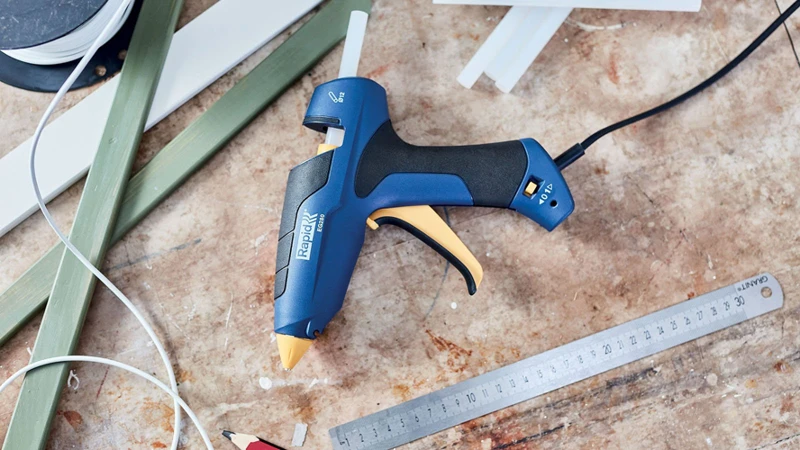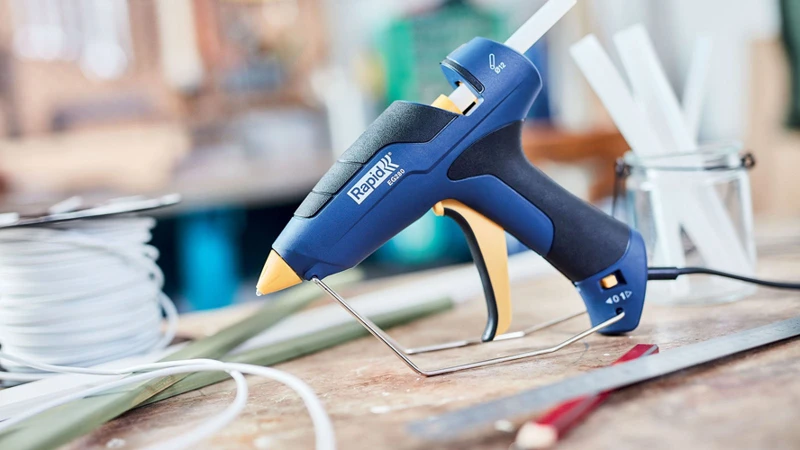When it comes to crafting and light DIY projects, hot glue is a popular choice due to its ease of use and quick-setting properties. But when bonding plastic materials, it is essential to understand whether or not this go-to adhesive is up for the task. In this exploration, we delve into the effectiveness of hot glue on plastic and the various factors that come into play.
Does Hot Glue Work on Plastic?
The question “does hot glue work on plastic?” is one that many DIY enthusiasts and crafters ask. The answer is yes, but with a caveat. Hot glue can bond plastic components, but its effectiveness depends on the type of plastic and the intended use of the bonded items. Certain plastics with low melting points can be deformed by the heat of the glue, while others may not be affected.
Factors Influencing Hot Glue Adhesion to Plastic
Several elements determine the bond strength of hot glue on plastic. These include the glue gun’s temperature, the specific formulation of the glue stick, and the surface type of the plastic. Plastics with a rough surface allow for better mechanical bonding, while smooth plastics may require special treatments to enhance adhesion.
Evaluating the Strength of Hot Glue on Plastic
When it comes to adhering plastic components, understanding the bond’s durability is paramount. Let’s assess hot glue’s strength on plastic and see how it measures up against alternative adhesives.
How Strong is Hot Glue on Plastic?
The strength of hot glue on plastic can be quite substantial, especially for non-load-bearing applications. “How strong is hot glue on plastic?” you might ask. The answer lies in the tensile and shear strength of the bond, which can be enough to hold together plastic decorations, toys, and lightweight household items.
Comparative Strength: Hot Glue vs. Other Adhesives
While hot glue does provide a decent level of adhesion, it may not always be the strongest option available. There are adhesives specifically designed for plastics that offer superior strength and durability. However, for quick fixes and simple projects, hot glue remains a convenient and reliable choice.
The Best Practices for Using Hot Glue on Plastic
Achieving a strong and durable bond on plastic surfaces with hot glue involves more than just the application. Proper preparation and technique can significantly improve bond strength.
Surface Preparation for Maximum Bonding
- Clean the plastic surface to remove any oils or debris.
- Roughen the surface with fine-grit sandpaper to enhance glue grip.
- Wipe the area with isopropyl alcohol to ensure it’s free from dust.
Application Techniques for Enhanced Durability
Applying hot glue with precision can make a difference in bond longevity. Use a glue gun with an appropriate temperature setting for the plastic type, and apply the glue evenly. Press the pieces together firmly until the glue cools and solidifies to ensure proper adhesion.
Identifying the Strongest Glue for Plastic
For critical applications where bond strength is of utmost importance, identifying the most robust adhesive is key. Let’s explore the contenders for the title of the strongest glue for plastic.
Strongest Glue in the World for Plastic: Myth or Reality?
The claim of the “strongest glue in the world for plastic” may sound like an alluring promise, but it is important to be skeptical. While there are high-performance adhesives, the strongest option often depends on the specific type of plastic and the application scenario.
Top Performing Hot Glue Sticks for Plastic Bonding
For those committed to using hot glue, selecting the right glue stick is crucial. Some formulations are enhanced with additives designed to bond with plastic more effectively. These sticks can significantly improve the strength and resilience of the bond.
Limitations and Considerations
Hot glue offers convenience, but it’s not without its limitations. Understanding where hot glue excels and where it falls short is vital for successful plastic bonding.
Is Hot Glue Good for Plastic in All Situations?
“Is hot glue good for plastic in every context?” is a question that needs careful consideration. Hot glue is suitable for many plastic bonding situations, particularly for lightweight and low-stress applications. However, it may not be the best choice for high-strength or high-temperature scenarios.
Potential Drawbacks of Using Hot Glue on Plastic
Some drawbacks of using hot glue on plastic include its limited temperature resistance and potential lack of flexibility. Over time, hot glue can become brittle, leading to bond failure under stress or impact.
Alternatives to Hot Glue for Plastic
Although hot glue is a versatile adhesive, it’s not always the optimal choice for every plastic bonding need. There are times when alternative adhesives may be more suitable.
When Will Hot Glue Work on Plastic? When Won’t It?
“Will hot glue work on plastic?” is a nuanced inquiry. It works well for temporary fixes, arts and crafts, and light-duty applications. However, for outdoor items, high-stress joints, or heat-prone areas, other adhesives are advisable.
Exploring Other Adhesive Options for Plastic Materials
For situations where hot glue isn’t ideal, there are alternatives such as epoxy resins, cyanoacrylate (super glue), and plastic-specific adhesives. These alternatives offer different benefits like increased strength, flexibility, or chemical resistance.
Future Innovations in Plastic Adhesives
The world of adhesives is ever-evolving, with new technologies and formulations constantly emerging. Staying abreast of these innovations can provide insight into future options for plastic bonding.
The Evolution of Hot Glue Technology
Hot glue has seen advancements in its formulations, with new types designed to bond more effectively with challenging materials such as certain plastics. The future might bring hot glue sticks with even greater strength and versatility.
Emerging Trends in Plastic Bonding Solutions
Trends in plastic bonding are leaning towards solutions that are not only stronger but also more environmentally friendly. Innovations may include bio-based adhesives or those with improved recyclability.
Conclusion: The Verdict on Hot Glue and Plastic
The dialogue surrounding hot glue and its effectiveness on plastic is one imbued with both enthusiasm and caution. Let’s encapsulate our findings and give recommendations for those considering hot glue for their plastic projects.
Summarizing the Effectiveness of Hot Glue on Plastic
Hot glue can be an effective adhesive for plastic, particularly in low-stress applications. Its strength is respectable, but it may not be the most robust option for every scenario.
When it comes to understanding the strength of adhesives on different surfaces, it’s essential to consider the material and the type of glue used. For instance, hot glue is a popular choice for craft projects and quick repairs, but how does it perform on plastic? In our article about how strong hot glue is, we explore its effectiveness and compare it with other adhesives. If you’re curious about how super glue fares on various surfaces, you might be interested in our in-depth looks at how strong super glue is on plastic and its bond strength when applied to metal in our article on how strong super glue is on metal. These resources are designed to help you choose the right adhesive for your project needs.
Final Recommendations for Plastic Bonding Projects
For lightweight, non-structural plastic bonding, hot glue can be a suitable choice. However, for demanding applications, exploring stronger alternatives is recommended. Always consider the specific requirements of your project when selecting an adhesive.


